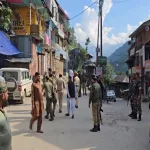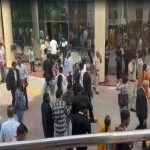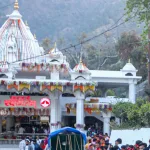Bashir Ahmad Shah, a seasoned artist hailing from Gopalpora area in Wathoora, Budgam, is dedicated to preserving the 700-year-old legacy of ‘Dambali Dance’ in central Kashmir.
Over the past several decades, Shah has been imparting training and knowledge to aspiring students, ensuring the continuation of this traditional art form in the region.
Under the Ministry of Culture’s ‘Guru Shishya Parampara Scheme,’ Shah annually receives a grant to teach and train young enthusiasts. He attributes his expertise to his father, Ghulam Qadir Shah, and his grandfather Kamal Shah, who, in turn, learned from earlier generations.
Shah’s commitment to teaching the younger generation is rooted in the goal of preserving and promoting rare and vanishing art forms, be they classical, folk, or tribal.
“There are 70 other groups of Dhamali in adjacent areas, and it is mandatory to pass on this dance form to the younger generation. Many people in Kashmir still wish for their children to learn and carry forward this legacy,” he said.
For Shah, Dambali Dance is not just an art form but also a source of livelihood. He describes it as a versatile dance that connects individuals with the divine. “What else does one need?” he remarked.
Having trained numerous youth in his locality, Shah highlights that it takes around 15-20 days to grasp this traditional dance, provided there is dedication and consistency.
“We have students working in six to seven theaters in the village, keeping this legacy alive. They have performed Dhamali at places where nobody was aware of it,” he added.
Shah and his team have showcased Dambali Dance in various states of India, receiving a positive response from the audience.
Dambali Dance, traditionally performed at three locations in Kashmir, holds significance during the Urs of Baba Naseeb-ud-Din Ghazi (Bijbehara), Anantnag, Khanmali Sahib Budgam, and Lal Bab Sahib Lal Bazar.
Despite the challenges of unfolding circumstances, Shah and his team continued performing Dambali in south Kashmir. “We want to keep it alive so that our future generations will understand and learn it,” he said.
Detailing the training process, Shah mentioned specific guidelines involving various dance elements like ‘Allah’ (Hoosani), Thra-Thas, Dhamali without breathing air, Raas (Gatka), and Lal Band.
At the conclusion of the dance, the performers raise their hands in prayer, expressing their faith in the Almighty. Shah pointed out that a dancer carries a long stick called ‘Alam,’ believed to fulfill wishes when a thread is tied to it during prayers.
Both the Sangeet Academy and Jammu and Kashmir Academy of Art, Culture, and Languages provide full support to Shah and his team.
Throughout the years, Shah has received numerous awards and certificates for his significant contribution to preserving the age-old Dambali dance in Kashmir.
His theatre, ‘National Dhamali Theatre,’ established in 1975, currently boasts 15 members performing this dance across India and abroad.
Looking ahead, Shah affirmed that he would continue to train and teach youth, considering it his passion and a family mission until the end of his life.





